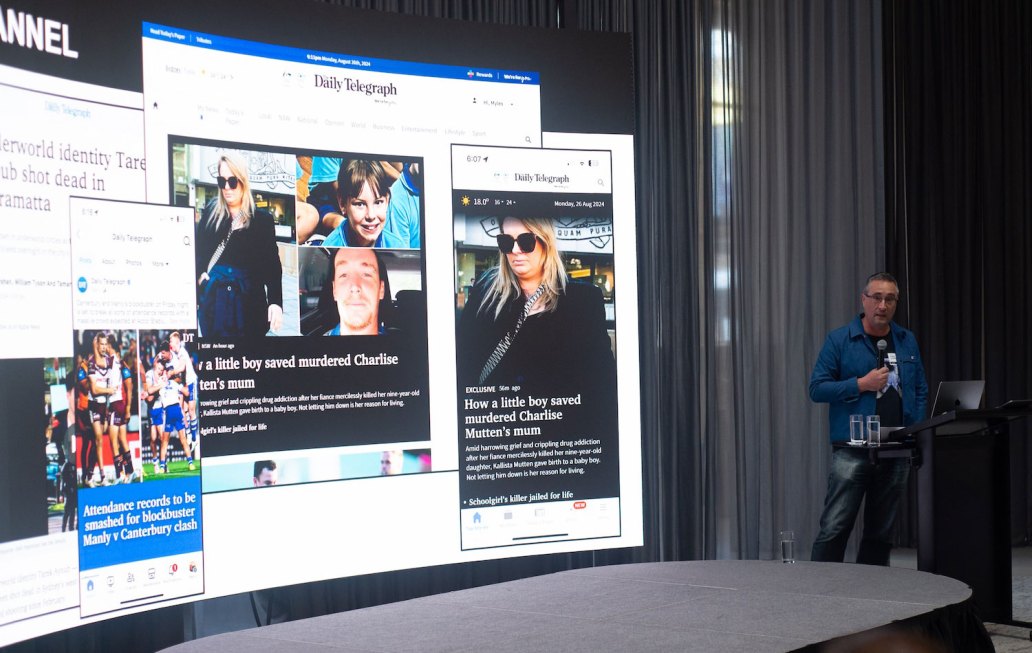In today’s fast-paced digital world, brands are constantly faced with the challenge of “doing more with less.” There’s a constant struggle to innovate and stay relevant, while managing resources efficiently.
At the recent VIP Connections Sydney event, representatives from News Corp Australia, Pedestrian Group, XWP, The Code Company, and others discussed how they adapt to changing technologies and consumer expectations to maximize impact with minimal resources.
Here are the key takeaways.
Artificial Intelligence brings efficiency, with caution
AI is changing the game in content creation or augmentation. However, this new frontier brings its own challenges, especially for content creators and marketing teams who are trying to navigate the shifting landscape.
While AI can automate routine tasks and streamline operations, it’s essential to maintain human oversight to ensure that the technology is used responsibly and ethically. The goal is to complement human skills with AI’s capabilities, optimizing processes without compromising the quality of output or ethical standards.
Consumers expect personalized omnichannel experiences
As consumer preferences evolve, particularly towards digital and interactive formats, brands must adapt their strategies accordingly. This involves not only changing the type of content they produce but also how they engage with consumers. The challenge is to keep content engaging and relevant, which requires ongoing innovation and adaptation.
Consumers today want choice in how they interact with businesses and brands, and they expect a unified experience across various touchpoints. Brands need to identify their customers across all channels, saving their preferences, interactions, and comments.

Brands tend to find their audience on social media, but they don’t own the audience there. So companies must strategize how to monetize audiences when they aren’t in their immediate network.
As brands strive to meet individual customer needs with precision, the shift towards personalization is more pronounced than ever. Rather than being concerned with personalizing the content on a given page, brands are focussing on personalizing the visitor’s journey: the “next best action.” This could be a subscription offer, an ad, or a piece of content that helps achieve a better return from a page.
Some brands are seeing personalization as an AI opportunity, because AI currently empowers the most personalization.
Privacy and compliance
Navigating the complex landscape of privacy laws and regulations is increasingly important, as brands collect and utilize more consumer data and consent and preference management has become a priority.
Balancing the need for personalization with the imperative of protecting user privacy is a delicate task that requires transparency and innovation in data-handling practices. Brands must ply these waters carefully, ensuring they harness data to enhance user experiences without overstepping ethical boundaries.
Composability offers ultimate innovation
Composability goes beyond traditional “build vs. buy” decision-making. It factors in the ability to integrate best-of-breed solutions into a modifiable technology suite, able to rapidly adapt to market changes.
“It used to be build versus buy. Composability, though, is having the right tool for the job.”
Myles Lagolago-Craig, CEO, XWP
Such interoperable systems allow components to be replaced with preferred tools to meet business needs. Open source CMS platforms like WordPress meet this need with quality APIs that can be used to interoperate with multiple systems in each business’s unique tech stack.
Also, the ability to experiment and adapt quickly is vital in a landscape where technological advancements and consumer behaviors constantly evolve. To remain competitive and relevant, brands must be agile, ready to pivot strategies based on feedback and changing market conditions.
Finally, brands need the flexibility to experiment with how they capture value from the market. This means moving from legacy systems toward composable stacks that allow them to try out new tech tools and be “merciless in failing fast.”
Looking ahead
Customer expectations for individualized, seamless digital interactions with brands have never been greater. However, companies face budget constraints, pressure to integrate new tech like AI, and compliance with changing privacy regulations.
Determining which innovations to invest in can be tough. But in today’s world of “doing more with less,” finding efficient and successful ways to do it is critical. To stay ahead, brands must use technology, data, and inventive approaches to not only fulfill present consumer demands, but also anticipate and adapt to future trends.



